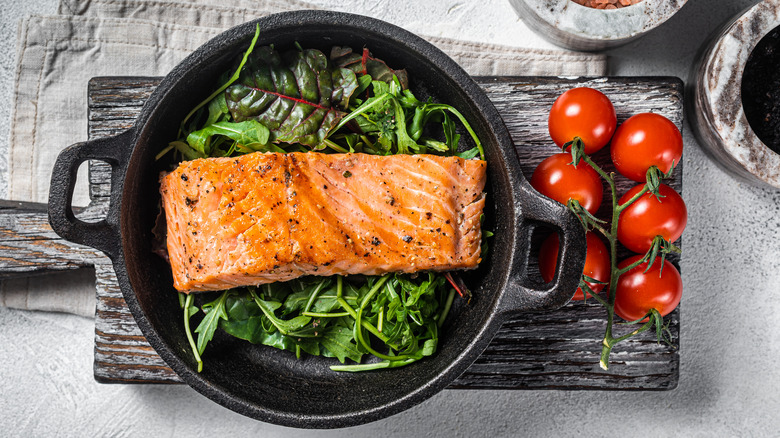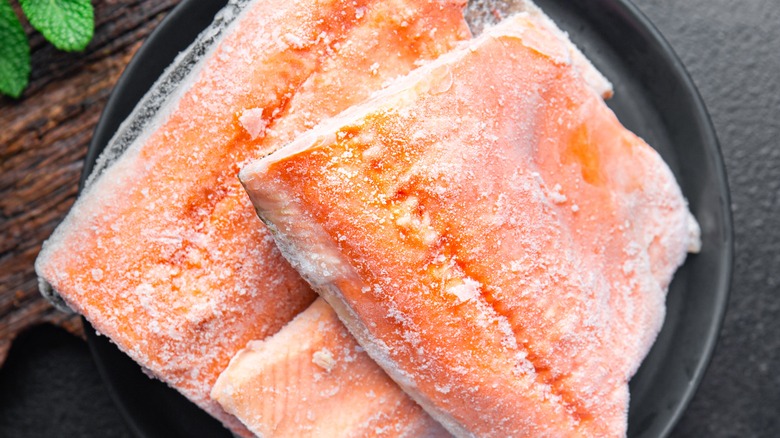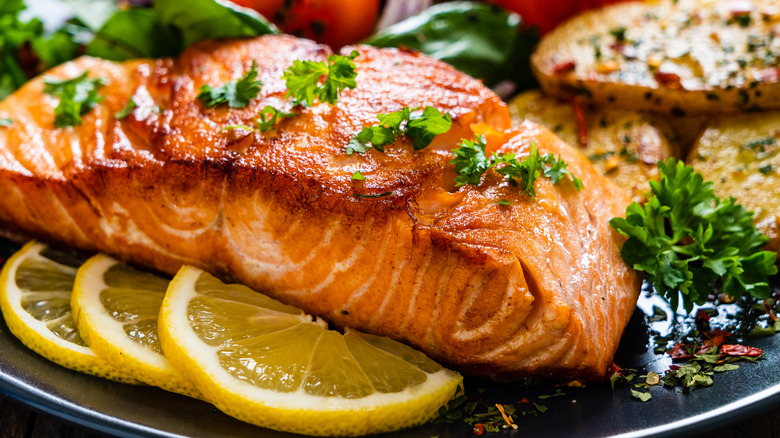The Crucial Step To Follow When Pan-Frying Frozen Salmon
Frozen salmon can be a major convenience. It can easily be kept in the freezer until needed in a pinch, and in some geographic areas, it's the only salmon option. However, defrosting salmon correctly can be a pain, especially if you forget to place it in the refrigerator overnight and need to thaw it quickly. Remembering this step in advance can deter many from frozen salmon; if forgotten, some think it can delay — or ruin — a meal.
Contrary to popular belief, salmon doesn't need to be thawed before cooking. It can even be cooked on the stovetop from frozen. To make the best pan-fried frozen salmon, one crucial step is to rinse the salmon filets with cool water, then pat them dry. This method removes ice from the surface of the salmon, allowing it to brown correctly for fish filets that don't taste like they were cooked from frozen.
Why remove surface ice from salmon?
The Maillard reaction is to thank for crisp, tasty fried salmon. This reaction happens when carbonyl groups found in a meat's fats and proteins mesh with amino acids at high temperatures to form new flavors. The flavor of browned meat comes from this reaction, which is why meats cooked via roasting, grilling, and pan-frying taste different from those that are boiled or poached.
The Maillard reaction occurs at temperatures of 300 F and above. Because this is hotter than the boiling point of water, the reaction won't happen unless parts of the meat are very dry. Modernist Cuisine recommends blotting as much water as possible from the protein's surface to remove moisture, getting it hot enough for the reaction to occur.
Rinsing and drying frozen salmon allows the Maillard reaction to take place. This results in a better-tasting fish. While the salmon could technically cook without this step, it would taste reminiscent of boiled salmon, with the fish coming to temperature but never getting hot enough to achieve that browned reaction.
More considerations when pan-frying salmon from frozen
There are a few other things to remember when using this trick to pan-fry frozen salmon. This method works best with thinner salmon filets. They cook faster, and the fish cooks more evenly. Making thicker filets from frozen runs the risk of overcooking the outside of the meat as you wait for the inside to cook to 145 F. You can also place a lid on the pan for quicker and more even cooking. Be sure to brown the filets before topping the pan with the lid, as this step will trap moisture and have the opposite effect of removing excess ice from the surface of the fish.
For the best pan-fried salmon filets from frozen, rinse and dry the exterior to remove moisture and allow for a better taste. This method will save you time and effort when cooking frozen fish that may even pass for fresh when it's complete. Next time you raid the freezer when making dinner, pan-fry those frozen filets.


